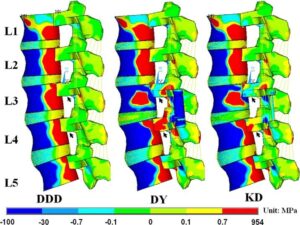How Stress Wrecks Your Spine (And 5 Things You Can Do About It)
We all know stress is harmful to our health, but did you know it could be a hidden cause of your back and neck pain? Stress affects your spine in powerful ways—tightening muscles, shifting posture, and even lowering your pain tolerance. Here’s how it works—and what you can do today to start feeling better.

🔄 The Stress–Tension–Pain Cycle
When you’re overwhelmed, your body enters “fight-or-flight” mode. This creates three big spinal problems:
1. Muscle Tightness
Stress causes your body to tense up, especially in your neck, shoulders, and lower back. Over time, this constant tension leads to stiffness, knots, and postural changes.
2. Posture Changes
Feeling anxious? You might hunch your shoulders, clench your jaw, or tuck your pelvis. These small but frequent posture shifts pull your spine out of alignment, leading to back and neck pain.
3. Increased Pain Sensitivity
Chronic stress doesn’t just cause pain—it amplifies it. When your nervous system is overloaded, mild discomfort feels like severe pain.
💡 Does this sound familiar?
If you carry stress in your shoulders, you may feel burning, tightness, or even headaches. If it hits your lower back, you might feel achy or stiff after sitting—even for a short time.
✅ 60-Second Stress Relief Routine
Try this quick routine to break the tension in your spine:
🧘 60-Second Reset
1️⃣ Sit tall and inhale through your nose for 4 seconds
2️⃣ Hold for 2 seconds
3️⃣ Exhale through your mouth for 6 seconds
4️⃣ Roll your shoulders backward 5 times
5️⃣ Drop your head to one side, hold for 10 seconds, then switch
Why It Works:
This combination of breath work and movement soothes your nervous system while releasing muscular tension.
🧠 Long-Term Solutions for a Healthier Spine
1. Move More, Sit Less
Exercise boosts endorphins (your body’s natural stress relievers) and stretches tight muscles. Even 5 minutes counts!
2. Massage or Foam Rolling
Break up those muscle knots—especially around your spine. A quick foam roll before bed can make a difference.
3. Meditation or Mindfulness
Apps like Headspace or Calm can help reduce stress in just 10 minutes a day. Less stress = less pain.
4. Sleep Smarter
Sleep restores both your spine and your nervous system. Try sleeping on your back with a pillow under your knees or on your side with a pillow between your knees.
🧾 Final Thoughts
Stress and spinal pain feed off each other—but small daily changes can break the cycle. From deep breathing and stretching to better sleep, these habits can make a big difference.
👉 Next up: Day 4 – The Ultimate Morning Routine for a Pain-Free Day.
Learn more about the hidden causes of back pain in our Day 1 post.


